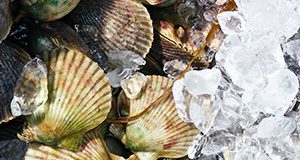Abstract
Recreational scalloping in Florida is a popular group activity for many residents and visitors throughout the summer months. Currently, the state allows the recreational harvest of scallops in several Florida Gulf Coast counties (http://myfwc.com/fishing/saltwater/recreational/bay-scallops/). However, people travel from all over Florida and other states to participate in the fun summertime fare (Hall-Scharf et al., 2018) and may not be familiar with the waters in which they are venturing. In addition, the warm summer water can increase the risk of food borne illnesses for those consuming scallops if not cleaned and stored properly. Therefore, it is important to be aware of the legal requirements for boating and scalloping, have a safety plan to minimize and/or prevent accidents while out on the water, and practice proper shucking recommendations to ensure food safety.
References
Hall-Scharf, B.J. 2018. Recreational Harvest of the Florida Bay Scallop: Hernando County. SGEF-235. Gainesville: University of Florida Institute of Food and Agricultural Sciences. http://edis.ifas.ufl.edu/sg148
National Lightning Detection Network (NLDN). 2018. Rank of Cloud-To-Ground Flash Densities by State from 2008 to 2017. Vaisala, Inc. https://www.weather.gov/media/safety/08-17Flash_Density_State.pdf

